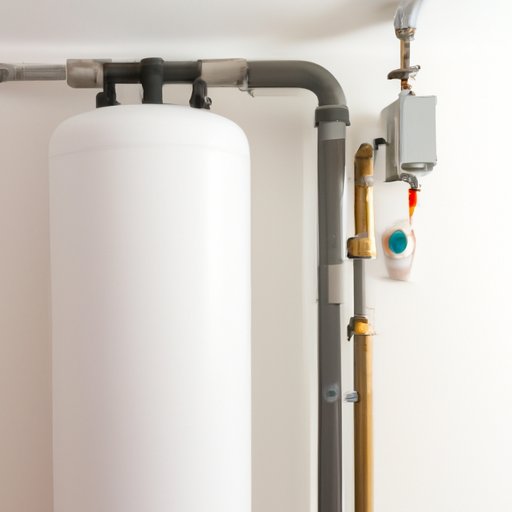
I. Introduction
Are you tired of constantly running out of hot water in your home? Are you looking for an energy-efficient and cost-effective alternative to traditional water heaters? A tankless water heater might be the solution you’ve been searching for. In this article, we will guide you through the process of installing a tankless water heater, compare the benefits of a tankless system to traditional water heaters, discuss DIY versus professional installation, and provide maintenance tips and guidance to help you avoid common installation mistakes.
II. Step-by-Step Guide for Installation
Before beginning your installation, you will need to gather the necessary tools and materials, including a wrench, pipe cutter, screwdriver, and Teflon tape. Whether you are installing a new system or replacing an existing one, follow the manufacturer’s instructions carefully. It is important to observe safety measures such as turning off the gas or electricity supply before beginning the installation process. Common mistakes to avoid include measuring inaccurately, over-tightening fittings, and installing the heater in an area with insufficient ventilation.
III. Comparison Article: Traditional Water Heaters vs Tankless Water Heaters
Tankless water heaters work by heating water directly without the use of a storage tank. Unlike traditional water heaters that constantly use energy to keep their tanks hot, tankless water heaters only use energy when hot water is needed. This makes them more energy-efficient, cost-effective, and better for the environment.
IV. Benefits of Tankless Water Heaters
A tankless water heater can save you significant money on your energy bills compared to a traditional water heater. In addition to energy savings, tankless water heaters also have a longer lifespan, lasting up to 20 years compared to the typical 10-year lifespan of traditional water heaters.
V. DIY vs Professional Install
There are pros and cons to both DIY and professional installation. While DIY installation can save you money, it can also come with risks and challenges, such as ensuring proper installation and avoiding potential safety hazards. It’s important to consider your own skill level and comfort with doing installations before deciding on DIY installation.
VI. Maintenance Guide
Maintaining your tankless water heater is essential for its longevity and efficiency. Regular cleaning such as removing debris from the air inlet screen is important. Descaling and flushing the heater periodically should also be a part of your maintenance routine, especially in areas with hard water. It’s important to check for leaks and perform basic troubleshooting steps if any issues arise.
VII. Common Mistakes and How to Avoid Them
Possible installation challenges include incorrect measurement and fitting, improper electrical or gas connections, and failing to follow manufacturer instructions. Guidance on correctly preparing your working area and properly installing your heater can help minimize these mistakes and ensure successful installation.
VIII. Is a Tankless Water Heater Right for You?
Before making a decision on whether a tankless water heater is the right option, consider factors such as your household’s hot water usage, climate, and budget. Tankless water heaters are not always a one-size-fits-all solution, and it’s important to consider the pros and cons carefully before making a decision.
IX. Conclusion
In conclusion, a tankless water heater is an energy-efficient and cost-effective alternative to traditional water heaters. Proper installation, regular maintenance, and careful consideration of your household needs are key to making the most out of your new system. Whether you choose a DIY or professional installation, a properly installed and maintained tankless water heater can provide you with years of efficient and reliable hot water service.




